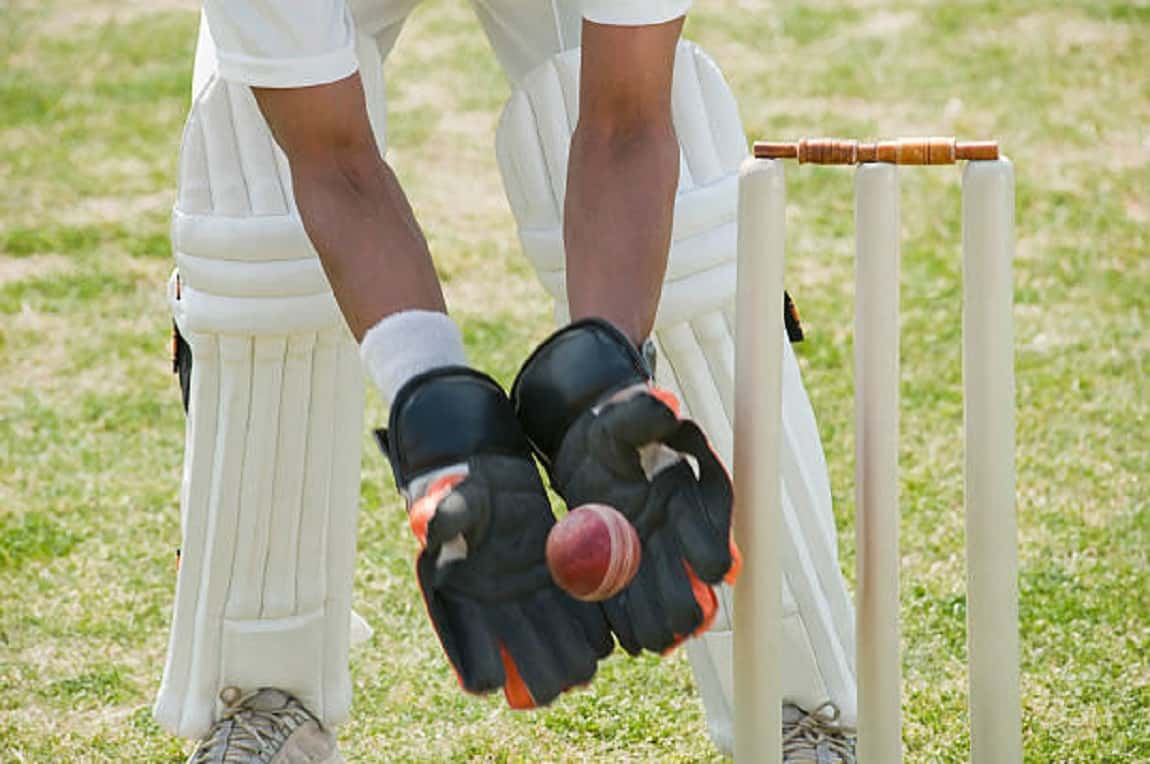How to Clean and Maintain Cricket Pads at Home (Step-by-Step)

Ever pulled your cricket pads out of your bag and caught a whiff that could clear a room? Yeah, we’ve all been there. Those trusty pads take a beating grass stains, sweat, and the occasional mystery smudge from a muddy pitch. But here’s the thing: cleaning and maintaining your cricket pads isn’t just about banishing the stink. It’s about keeping your gear game-ready, saving you from forking out for new pads, and maybe even earning a nod of respect from your teammates.
I’ve spent years coaching and geeking out over cricket equipment, and I’m here to share a no-fuss, step-by-step guide to make your pads look and feel as good as new. Ready to transform your pads from grimy to glorious? Let’s get started.
Why Your Cricket Pads Deserve Some Love
I’ll never forget the time a young player on my team showed up with pads so crusty they practically walked onto the field themselves. We had a good laugh, but it got me thinking: why do we neglect our gear? Clean pads aren’t just about looking sharp (though that’s a nice bonus); they're also about feeling sharp. They’re about staying hygienic, boosting your confidence, and extending the life of your equipment.
A 2024 study in Sports & Fitness Journal found that well-maintained sports gear can last up to 30% longer, which means more money for post-match drinks instead of replacements. Plus, dirty pads can breed bacteria, leading to skin irritation or that dreaded locker-room smell. “Players who care for their gear show they’re serious about the game,” says John Patel, head coach at Sydney Cricket Club. So, why let grime steal your shine? A little effort goes a long way.
Taking care of your pads sets you up for better performance and fewer headaches. Let’s gather the tools to make it happen.
What You Need to Get Started
Before you dive into cleaning, let’s talk supplies. You don’t need a fancy kit or a degree in chemistry just a few basics you probably already have at home. I learned this the hard way after ruining a pair of pads with the wrong cleaner (RIP, my old Kookaburras). Here’s what you need to clean your pads without drama.
-
Mild detergent: Grab something gentle like Seventh Generation. It’s eco-friendly and won’t wreck your pads.
-
Soft brush: An old toothbrush is perfect for scrubbing out stubborn dirt.
-
Microfiber cloth or sponge: These are kind to pad surfaces, unlike rough scrubbers.
-
Warm water: Not scalding hot think “pleasant bath” temperature.
-
Spray bottle: Makes applying your cleaning mix a breeze.
-
Non-toxic disinfectant: I like Force of Nature; it’s safe for foam padding.
-
Leather conditioner: Lexol works wonders for leather pads.
-
Odor-neutralizing spray: Febreze Sport is my go-to for keeping things fresh.
“Check your pad’s material first,” advises Emma Clarke, equipment technician at Kookaburra. “Leather needs different TLC than synthetic.” Here’s a quick table to guide your shopping.
|
Product |
Purpose |
Eco-Friendly? |
|
Seventh Generation Soap |
Cleaning synthetic pads |
Yes |
|
Lexol Leather Conditioner |
Moisturizing leather pads |
No |
|
Force of Nature Spray |
Disinfecting foam padding |
Yes |
With these in hand, you’re ready to tackle the mess. Let’s move on to the cleaning process.
Your Step-by-Step Cleaning Playbook
Cleaning cricket pads might sound like a chore, but it’s honestly kind of satisfying like giving your gear a fresh start. Whether your pads are leather, synthetic, or a mix, this guide breaks it down into simple steps. I’ve cleaned countless pairs over the years, and this method never fails. Ready to make those pads sparkle? Here’s how.
-
Brush Off the Grime: Start with a soft brush to sweep away dirt, mud, or grass. Pay extra attention to seams and Velcro, where gunk loves to hide.
-
Mix Your Cleaning Solution: Combine a teaspoon of mild detergent with a cup of warm water in a spray bottle. Give it a good shake.
-
Wipe Down Synthetic Pads: Spray your cloth (not the pad directly) and gently wipe synthetic surfaces. Too much water can weaken the material, so keep it light.
-
Handle Leather Pads with Care: For leather, use a barely damp cloth with a tiny bit of detergent. Follow up with leather conditioner to keep it supple. “Less water is better for leather,” says Clarke from Kookaburra.
-
Freshen Up Foam Padding: Lightly mist foam areas with a non-toxic disinfectant. Don’t soak them wet foam loses its shape.
-
Dry the Right Way: Set your pads in a shaded, airy spot. Direct sunlight can crack leather or fade colors, so skip the backyard clothesline.
Take your time with these steps, and your pads will thank you. Now, let’s talk about keeping them in top shape long-term.
Maintenance Tricks to Make Your Pads Last
Cleaning gets your pads looking good, but maintenance keeps them playing the long game. I once had a player who tossed his cricket pads in a damp bag after every match big mistake. They smelled like a swamp and fell apart in a year. These tips will help your pads stay reliable season after season. Here’s the playbook.
-
Store Them Right: Use a breathable cricket bag and keep it in a dry, cool place. “Damp storage is a death sentence for pads,” says Michael Vaughan, former England captain.
-
Banish Odor: Sprinkle baking soda inside your pads after use or hit them with an odor-neutralizing spray. A 2023 Sports Hygiene Research study found baking soda cuts odor-causing bacteria by 40%.
-
Fix Small Issues Early: Got a loose strap or worn Velcro? Stitch it up or replace it before it becomes a bigger problem.
-
Check Regularly: Every few weeks, inspect your pads for tears, loose stitching, or fading. Catching issues early saves you grief.
Quick Maintenance Checklist:
-
Air out pads after every match.
-
Store in a dry, ventilated spot.
-
Inspect for damage monthly.
These habits keep your pads ready for action. Next, let’s cover some mistakes to dodge.
Mistakes That Could Ruin Your Pads
I’ve seen players make some epic blunders when cleaning their pads like the time a teammate threw his in the washing machine and ended up with a soggy, useless mess. Want to avoid that kind of disaster? Here are the big no-nos when it comes to pad care.
-
Harsh Chemicals: Bleach or strong detergents can eat away at foam and fade colors. Stick to mild, pad-friendly soaps.
-
Washing Machine Fiasco: Machines are brutal on pads, wrecking foam and stitching. Hand-clean only, as SG Cricket’s care guide warns.
-
Sun-Drying Blunder: Drying pads in direct sunlight might seem smart, but it can crack leather and fade synthetic materials. Shade is your friend.
Do’s and Don’ts Table:
|
Do |
Don’t |
|
Use mild detergent |
Reach for bleach |
|
Hand-clean with a cloth |
Toss pads in the washing machine |
|
Air-dry in shade |
Bake them in the sun |
Steer clear of these traps, and your pads will stay in fighting shape. Let’s explore some planet-friendly cleaning options next.
Go Green with Your Pad Cleaning
If you’re like me, you love cricket but also care about the planet. The good news? You can clean your pads without leaving a big environmental footprint. With brands like Gunn & Moore pushing sustainability in cricket gear, it’s easier than ever to go green. These eco-friendly methods work just as well as traditional ones, and they’re kind to Mother Earth.
-
Biodegradable Soaps: Try Dr. Bronner’s it’s gentle on pads and breaks down naturally.
-
Vinegar Power: Mix equal parts water and white vinegar in a spray bottle for a natural odor-buster. A 2024 Green Sports Alliance study says vinegar kills 30% of bacteria.
-
Reusable Cloths: Ditch single-use wipes for washable microfiber cloths to cut waste.
Eco vs. Traditional Cleaners:
|
Cleaner Type |
Pros |
Cons |
|
Biodegradable Soap |
Safe, effective, planet-friendly |
Costs a bit more |
|
Vinegar Solution |
Cheap, natural, kills bacteria |
Smells funky at first |
|
Traditional Cleaner |
Easy to find |
May harm pads or environment |
“Green gear care is a small step with big impact,” says Dr. Lisa Green, sustainability expert at Eco Sport Solutions. Give these a try for a cleaner conscience and pads.
Eco-friendly cleaning is a win-win. Now, let’s tackle some common questions.
Get Your Pads Ready for the Pitch
Your cricket pads are like loyal teammates they protect you through every dive and delivery. So why not treat them right? Cleaning and maintaining them takes less time than a quick net session, and the payoff is huge: fresher gear, better hygiene, and a longer lifespan for your pads.
Plus, there’s something satisfying about stepping onto the field with pads that look and smell like they belong in a pro’s kit. “Gear care shows you respect the game and yourself,” says John Patel. So grab that brush, try a green cleaner, and give your pads some love. Got a cleaning hack that works for you? Drop it in the comments or check out our other cricket gear tips to keep your game sharp.
FAQs:
Can I throw my cricket pads in the washing machine?
Big no. Machines shred foam and ruin stitching, as SG Cricket’s guidelines point out. Stick to hand-cleaning with a damp cloth.
How do I get rid of that awful pad smell?
Sprinkle baking soda inside and leave it overnight, or use a spray like Febreze Sport. Air them out after every game to keep odors at bay.
What cleaning products are safe?
Go for mild detergents like Seventh Generation and non-toxic disinfectants. Skip bleach or ammonia they’re too harsh.
How often should I clean my pads?
Every 2–3 uses or when they look dirty. Regular cleaning stops odor buildup, per a 2023 Sports Hygiene Research study.
Can I use leather conditioner on synthetic pads?
Nope, it’ll leave a greasy mess. Save conditioner for leather and use a cloth for synthetics.
